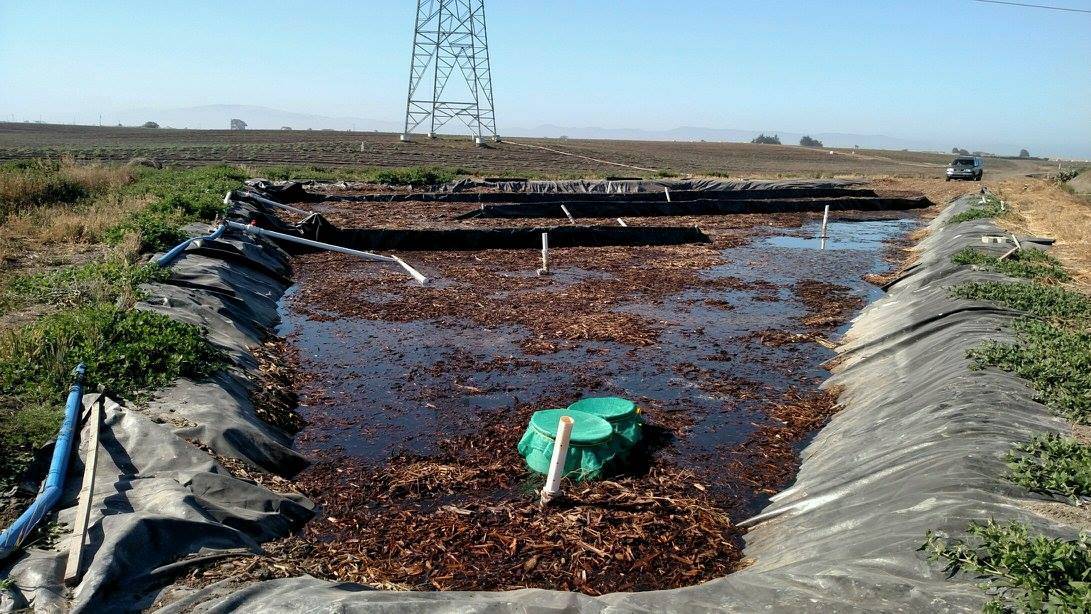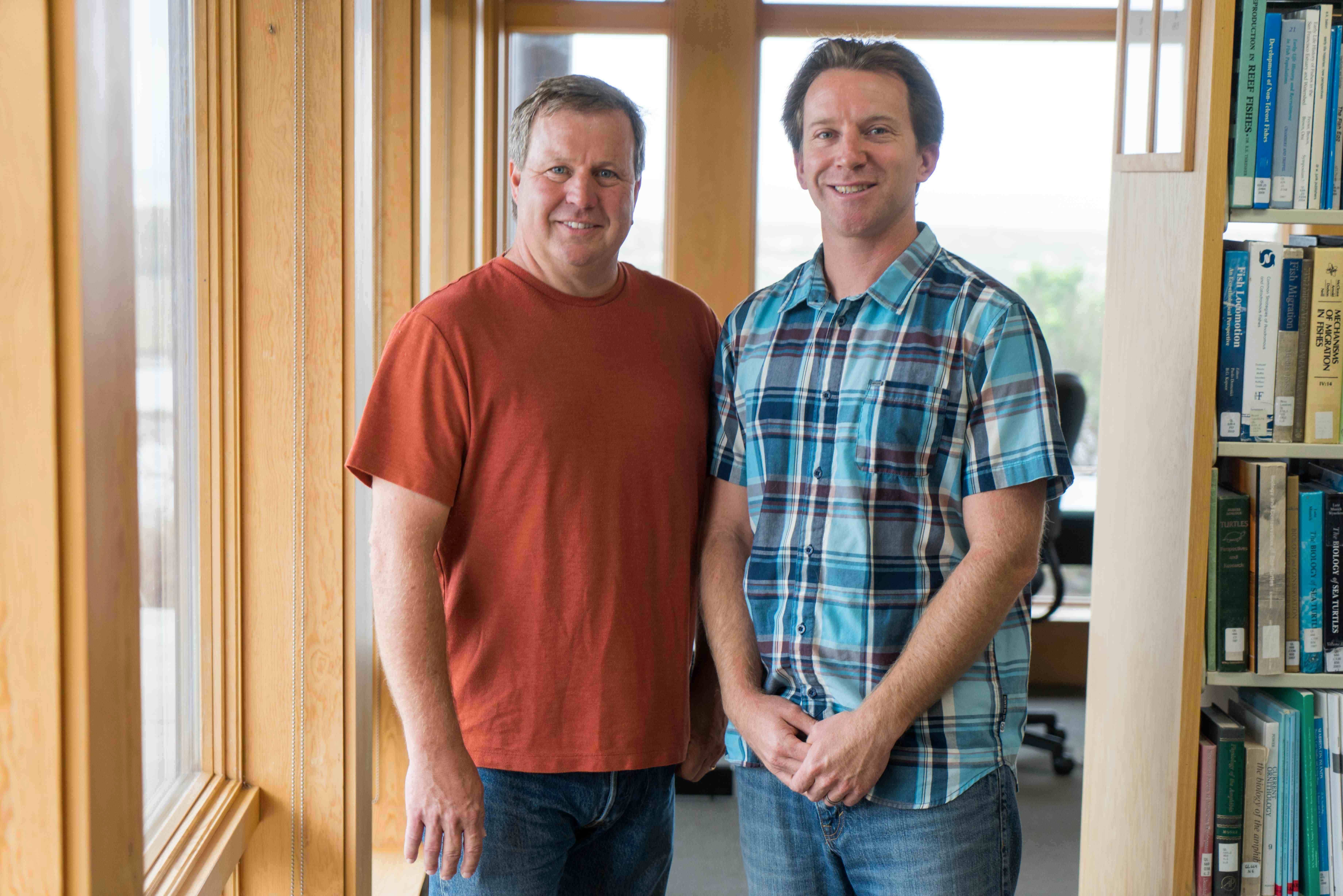Ross Clark Implements High-Impact Nitrate Removal System
An 18-acre site along California’s central coast is being returned to its natural condition after 100 years, thanks to a committed team at Moss Landing Marine Labs (MLML). Where source water enters the wetland, researchers have built a working laboratory to investigate a low-tech but highly effective technology, called a wood- chip bioreactor, to removes nitrates from agricultural runoff water.
“Wood chip bioreactors have been shown to remove nitrates from water in pilot settings, but now we’ve installed one at scale in a true working environment,” explains Ross Clark (above left with Kevin O'Connor), an MLML researcher, director of the Central Coast Wetlands Group (CCWG), and expert on wetland restoration.
The bioreactor laboratory consists of 12 parallel trenches which will be filled with woodchips. Three different treatments will be investigated, in partnership with researchers at Cal State Monterey Bay, to determine the most effective type of wood chip bioreactors for our coastal climate. Located in Moro Cojo Slough, just two miles east of MLML, it is the first of its kind to be put into operation along California’s central coast. Drainage water is routed through the trenches, and the bacteria in the wood chips consumes up to 50% of the nitrates in the water. Once cleaned, the water drains into the new 18 acre wetland, where it will be cleaned even more while providing habitat.
The team is looking forward to replicating the bioreactor’s success.
“An essential component of the project is comprehensive documentation,” says Kevin O’Connor, an MLML ecologist and CCWG program manager. “Documenting our accomplishments will allow us to work with other coastal communities to reproduce what we have done.”
Grant funding: California Department of Food and Agriculture

Bioreactor under construction, 2017
2017
